Midweek Review
BR’s NK weapons claim, displaying of LTTE image at Ind. Day galvanize media et al
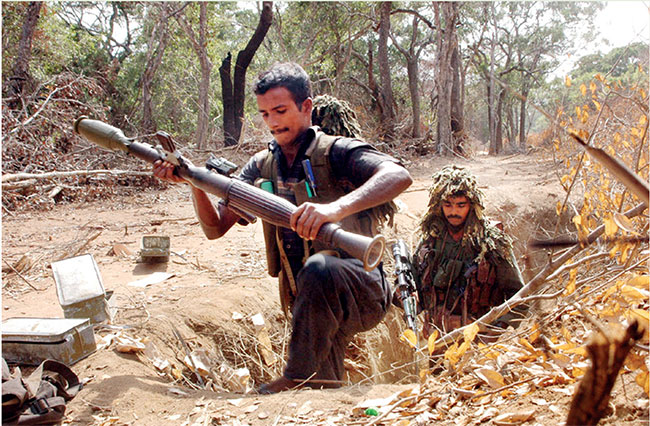
By Shamindra Ferdinando
A section of the international media pounced on Finance Minister Basil Rajapaksa’s declaration that Sri Lanka procured weapons from North Korea during the Eelam War IV (2006-2009). Sri Lanka’s ‘Independence Day’ parade, too, drew public attention after The Tamil Guardian, UK reported how a military float, carrying the war wounded, was decorated with a photograph of LTTE cadres. The Tamil Guardian revelation caused quite a controversy. The inclusion of that particular picture is nothing but a slip-up.
The war-winning Army shouldn’t be overly concerned over some sections of the media, both here and abroad, and other interested parties seeking to exploit a simple mistake.
Let us not give an opportunity to those who cannot stomach Sri Lanka’s triumph over the Liberation Tigers of Tamil Eelam (LTTE) to gloat over a blunder.
The image in question is among a set of photographs released by the LTTE in early Sept. 2008 to the media. The pictures captured by an LTTE photographer on Sept 2, 2008 were of fighting at Vannearikku’lam, west of Kilinochchi. The Army suffered heavy losses in the Vannearikku’lam battle but the LTTE couldn’t prevent the fall of the village and the subsequent collapse of their much larger Nachchikudah defences.
The Tamil Guardian
, in Feb 05, 2022 revealed the mistake made by the Army in a report headlined ‘Saluting the LTTE? Sri Lankan military features LTTE commandos in Independence Day parade.’
Whoever had been tasked to choose the required photographs has been quite clearly careless as the combatant, carrying a Rocket Propelled Grenade (RPG) launcher, wore a short sleeved shirt.
What really astonished the writer is in spite of the military float being there for several days, in the run-up to the Independence Day parade, no one recognised the pic of two LTTE’ers – the lead person wearing slippers carrying a RPG launcher, probably of Chinese origin, and the other person armed with a sniper weapon.
The Tamil Guardian
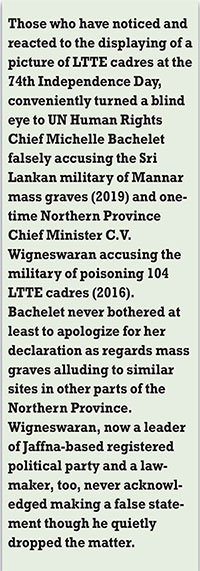 headline described the two men as LTTE commandos though the TamilNet report, headlined ‘Tigers locate 29 SLA bodies, 75 SLA killed, 100 wounded in Vanni’, posted online on Sept. 2, 2008, did not make any reference to LTTE commandos. There had been three other TamilNet reports, headlined ‘Fighting intensifies at Vannearikku’lam (Sept. 2, 2008), ‘LTTE confronts, recovers seven bodies (Sept. 2, 2008) and ‘Tigers seize a large number of SLA in Vanni clashes’ (Sept. 3, 2008). Those reports, too, didn’t make any reference to LTTE commandos. The reportage of the action along Nachchikudah-Vannearikku’lam-Akkarayan kulam line indicated that the LTTE believed the Army could have been overwhelmed.
headline described the two men as LTTE commandos though the TamilNet report, headlined ‘Tigers locate 29 SLA bodies, 75 SLA killed, 100 wounded in Vanni’, posted online on Sept. 2, 2008, did not make any reference to LTTE commandos. There had been three other TamilNet reports, headlined ‘Fighting intensifies at Vannearikku’lam (Sept. 2, 2008), ‘LTTE confronts, recovers seven bodies (Sept. 2, 2008) and ‘Tigers seize a large number of SLA in Vanni clashes’ (Sept. 3, 2008). Those reports, too, didn’t make any reference to LTTE commandos. The reportage of the action along Nachchikudah-Vannearikku’lam-Akkarayan kulam line indicated that the LTTE believed the Army could have been overwhelmed.
In spite of fierce resistance, the LTTE couldn’t hold Vannearikku’lam. The collapse of LTTE defences at Vannearikku’lam and then Nachchikudah escalated overall deterioration of their conventional fighting capability on the Vanni west region. Now that The Tamil Guardian staff had earned the appreciation of the like-minded persons for highlighting the LTTE’s success at some of the confrontations at Vannearikku’lam, it would be pertinent to discuss the operations undertaken by the 58.2 Brigade to capture the village on Oct 20th, 2008. The 58.1 Brigade brought Nachchikudah under its control on Oct. 29, 2008. The two Brigades were assigned to the 58 Division.
Present Army Commander General Shavendra Silva, commanded the 58 Division (initially known as Task Force 1). The celebrated Division, having launched operations in Sept. 2007 under the command of the then Brigadier Chagi Gallage, played a significant role in the overall campaign, both west and east of the Jaffna-Kandy A9 road until the war was brought to a successful end. The Division engaged in some of the fiercest fighting for Vannearikku’lam and Nachchikudah. (Gallage was replaced by Shavendra Silva soon after the capturing of Silavathurai. The change took place after Gallage suffered a heart attack)
Battle for Vannearikku’lam
The LTTE had strong defences that included an earth bund that extended from Nachchikudah on the north-west coast to Akkarayan kulam via Vannearikku’lam. The LTTE defences comprised dense minefields and booby traps. Constructed in a zig zag line, the earth bund posed a huge challenge as those attacking the enemy positions were constant target of the artillery and mortars. The 58.2 troops fought several hundred defenders for several weeks. In spite of the 58.2 assigned the task, the 58.1 and 58.2 Brigades, too, were brought in to neutralise enemy positions. Still, the three Brigades couldn’t evict the defenders, who fought back, fiercely. In fact, they made several unsuccessful attempts to overrun the LTTE line.
Finally, the 9th battalion of the Gemunu Watch (9GW) made the breakthrough. After fierce confrontations, the 9 GW captured about 300 meters, west of Vannearikku’lam. During a period of five days, the LTTE made 18 abortive attempts, backed by heavy artillery and mortar fire, to overrun the positions held by 9 GW. Then, the troops of the 10 battalion of the Gajaba Regiment (10 GR) fought their way into the area west of the 300 meters seized by 9 GW and stabilised the newly captured area. The 10 GR achieved success five days after the breakthrough made by the 9 GW.
Demoralised defenders pulled back as troops of 11 SLLI (11 battalion of Sri Lanka Light Infantry), 6 GW and 12 GW overran the earth bund east of the Vannearikku’lam. For the first time during the Vanni offensive, the LTTE carried out gas attacks on 12 GW troops though it could not prevent the fall of Vannearikku’lam. Troops of 6 GW, 9 GW and 12 GW finally brought Vannearikku’lam under government control.
Why on earth did the Army peruse the social media for pictures from the conflict zone? Had the Army checked their own albums and video footage, they could have found plenty of action pictures from different theatres and major operations conducted over the years. Pictures of ‘Operation Liberation,’ ‘Riviresa’ Jayasikurui, ‘Balavegaya’et al could have been included. Instead, pictures were selected from the internet, obviously. There is no doubt in previous years, too, pictures were selected that way. Perhaps, one or two pictures of LTTE cadres had been displayed in previous years, too.
It would be pertinent, at least, to briefly discuss the battle for Nachchikudah that brought offensive action, directed at the earth bund, extending from the northwest coastal town to Akkarayan kulam via Vannearikku’lam, to a successful conclusion. Actually, the collapse of the LTTE defence line by the last week of Oct 2008 opened the remaining Vanni west region to the advancing Army. The 58.1 Brigade had been engaged in action for over two months against LTTE positions at Nachchikudah before entering the village on Oct 29, 2008. The 11 SLLI (11battalion, SLLI) played a crucial role in the operation. The 11 SLLI successfully attacked the earth bund from the direction of Mulankavil, in spite of heavy artillery, mortar, 12.7 mm and General Purpose Machine Gun (GPMG).
LTTE loses Vanni west
The Vanni campaign reached a crucial point on June 30, 2008 (four months before the total collapsing of the Nachchikudah-Akkarayan kulam defence line via Vannearikku’lam) when the 58 Division linked up with the 57 Division southwest of Periyamadu. That created the largest ever battlefront on the western flank in the entire Eelam war. Lt. Gen. Sarath Fonseka tasked Maj. Gen. Jagath Dias’s 57 Division to liberate Kilinochchi whereas the 58 Division was to sweep the Vanni west. Having linked up, the 57 Division pursued its objective. The 58 Division advanced towards the northwestern coast. After a series of fierce confrontations, troops captured the strategically located Sea Tiger base at Vidathalthivu on July 16.
The fall of Vidathalthivu and Nachchikudah in mid-July and late Oct, 2008, respectively set the stage for the 58 Division to rapidly advance towards the Jaffna lagoon. The 57 and 58 Divisions launched in early March 2007 and early Sept 2007, respectively began making territorial gains in April 2008.
Task Force I (58 Division)
* Adampan on May 9
* Mullikkandal, Minnaniranchan and Marattikannaddi situated north of Adampan on June 24.
* Mannar ‘Rice Bowl’, an area extending over 120 square kilometres on June 29 thereby bringing Alankulama, Andankulama, Alakaddiveli, Parappakandal, Parappukadatan, Papamoddai, Odupallam, Neduvarampu, Kannaputtukulama and Vannakulama.
* On June 30 TF I links up with 57 Division southwest of Periyamadu creating the largest ever battlefront on the western flank in the entire Eelam war.
* Vidathalthivu on the northwestern coast on July 16
* Illuppaikkadavai on July 20.
* Vellankulam on August 2.
* Mulankavil and Pallavarayankaddu on August 12.
* Maniyankulama on October 16.
* Vannerikkulam on October 20.
* Nochchimodai on October 28
* Jeyapuram on October 29.
* Nachchikuda on October 29
* Kiranchi on November 10
* Devil’s Point and Vallaipadu on November 13
* Pooneryn regained on November 15
* Paranthan regained on January 1 and 2, 2009 (almost simultaneously Elephant Pass and Kilinochchi north, too, were brought under control)
57 Division
* Madhu church complex on April 24
* Palampiddi on May 16
* Mundumurippu on May 23
* Periyamadhu on June 15
* Naddankandal on July 11
* Kalvilan on August 13
* Thunukkai and Uilankulam on August 22
* Mallavi on September 2
* 29 October troops dominate Akkarayankulam tank bund
* Overrun Akkarayankulam built-up in Kilinochchi on November 5
* Kokavil on December 1
* Terumurikandy junction regained on Dec 10
* Iranamadu junction liberated on January 01, 2009
* Kilinochchi on January 2
North Korean weapons
Some sections of the international media exploited Basil Rajapaksa’s declaration of Sri Lanka acquiring North Korean weapons. Foreign Minister Prof. G.L. Peiris was compelled to deny media reports based on an interview given by the Finance Minister to Shyam Nuwan Ganewatte of Divaina. Perhaps, the SLPP founder and political strategist felt such a claim would have helped to justify the existence of unauthorised foreign exchange setups. There hadn’t been any issue with Ganewatte’s reporting, certainly an expert in financial matters. Those who had been waiting for an opportunity to discredit Sri Lanka, particularly ahead of the 49th sessions of Geneva-based United Nations Human Rights Council (UNHRC), seized the opportunity.
Sri Lanka never bought weapons from North Korea during any phase of the war against Tamil terrorist groups (1983-2009) though several Fast Attack Craft (FACs) were brought from South Korea. There was no requirement to do so as major military powers, including China, the US, Russia, Pakistan and Israel, provided a range of arms, ammunition and equipment required by the Sri Lankan military. Other suppliers included Czechoslovakia and India. At the onset of the war, India strongly opposed weapons supply to Sri Lanka. However, India quietly gave up its opposition after its disastrous military mission in Sri Lanka (1987-1990) and the assassination of former Indian Prime Minister Rajiv Gandhi at Sriperumbudur in May 1991.
The LTTE used funds raised in the West to procure weapons from various sources after India stopped supplying weapons. The LTTE even targeted the US. The US revealed attempts made by the LTTE to procure a range of weapons, including shoulder fired anti-aircraft missiles, night vision devices and machine guns. Among those who had been arrested for the abortive bid to procure US weapons were several foreigners, including a retired Indonesian Marine Corps General. However, the LTTE succeeded in procuring Chinese weapons over a period of time. The weapons, the LTTE had acquired from China, were routed through North Korea over a period of time quiet successfully. The procurement of Chinese weapons, moved via North Korea, came to light after the Navy acting on information provided by the Directorate of Military Intelligence (DMI), intercepted LTTE floating arsenals on the high seas.
Western powers conveniently turned a blind eye to uninterrupted sea supply route though they knew that funds raised in their countries were used to procure weapons. The LTTE arsenal included a range of artillery and mortars of Chinese origin. They also had ZPU type dedicated anti-aircraft guns as well as heat seeking missiles. But, it would be necessary to stresses that China hadn’t been the only source and absolutely no official involvement. China acted swiftly and decisively after Sri Lanka brought the clandestine weapons route to their notice. China detained a shipload of weapons bound for the LTTE. The LTTE had used North Korea to transfer weapons on the basis of false end-user certificates. Acting on specific information provided by the DMI and satellite images provided by the US, subsequently, the Navy hunted down LTTE floating arsenals. The LTTE suffered a debilitating setback due to the disruption of the sea supply route. Interested parties have sought to exploit Minister Rajapaksa’s unsubstantiated claim to cause further trouble for Sri Lanka.
Midweek Review
How massive Akuregoda defence complex was built with proceeds from sale of Galle Face land to Shangri-La

The Navy ceremonially occupied its new Headquarters (Block No. 3) at the Defence Headquarters Complex (DHQC) at Akuregoda, Battaramulla, on 09 December, 2025. On the invitation of the Commander of the Navy, Vice Admiral Kanchana Banagoda, the Deputy Minister of Defence, Major General Aruna Jayasekara (Retd) attended the event as the Chief Guest.
Among those present were Admiral of the Fleet Wasantha Karannagoda, the Defence Secretary, Air Vice Marshal Sampath Thuyacontha (Retd), Commander of the Army, Lieutenant General Lasantha Rodrigo, Commander of the Air Force, Air Marshal Bandu Edirisinghe, Inspector General of Police, Attorney-at-Law Priyantha Weerasooriya and former Navy Commanders.
With the relocation of the Navy at DHQC, the much-valued project to shift the Ministry of Defence (MoD) and Headquarters of the war-winning armed forces has been brought to a successful conclusion. The Army was the first to move in (November 2019), the MoD (May 2021), the Air Force (January 2024) and finally the Navy (in December 2025).
It would be pertinent to mention that the shifting of MoD to DHQC coincided with the 12th anniversary of bringing back the entire Northern and Eastern Provinces under the government, on 18 May, 2009. LTTE leader Velupillai Prabhakaran was killed on the following day.
The project that was launched in March 2011, two years after the eradication of the Liberation Tigers of Tamil Eelam (LTTE), suffered a severe setback, following the change of government in 2015. The utterly irresponsible and treacherous Yahapalana government halted the project. That administration transferred funds, allocated for it, to the Treasury, in the wake of massive Treasury bond scams perpetrated in February and March 2015, within weeks after the presidential election.
Maithripala Sirisena, in his capacity as the President, as well as the Minister of Defence, declared open the new Army Headquarters, at DHQC, a week before the 2019 presidential election. Built at a cost of Rs 53.3 bn, DHQC is widely believed to be the largest single construction project in the country. At the time of the relocation of the Army, the then Lt. Gen. Shavendra Silva, the former Commanding Officer of the celebrated Task Force I/58 Division, served as the Commander.
Who made the DHQC a reality? Although most government departments, ministries and armed forces headquarters, were located in Colombo, under the Colombo Master Plan of 1979, all were required to be moved to Sri Jayewardenepura, Kotte. However successive administrations couldn’t go ahead with the massive task primarily due to the conflict. DHQC would never have been a reality if not for wartime Defence Secretary Gotabaya Rajapaksa who determinedly pursued the high-profile project.
The absence of any reference to the origins of the project, as well as the significant role played by Gotabaya Rajapaksa at the just relocated Navy headquarters, prompted the writer to examine the developments related to the DHQC. The shifting of MoD, along with the Armed Forces Headquarters, was a monumental decision taken by Mahinda Rajapaksas’s government. But, all along it had been Gotabaya Rajapaksa’s determination to achieve that monumental task that displeased some within the administration, but the then Defence Secretary, a former frontline combat officer of the battle proved Gajaba Regiment, was not the type to back down or alter his strategy.
GR’s maiden official visit to DHQC
Gotabaya Rajapaksa, who made DHQC a reality, visited the sprawling building in his capacity as the President, Defence Minister and the Commander-in-Chief of the Armed Forces on the morning of 03 August, 2021. It was Gotabaya Rajapaksa’s maiden official visit to the Army Headquarters, located within the then partially completed DHQC, eight months before the eruption of the externally backed ‘Aragalaya.’ The US-Indian joint project has been exposed and post-Aragalaya developments cannot be examined without taking into consideration the role played by political parties, the Bar Association of Sri Lanka, media, as well as the weak response of the political leadership and the armed forces. Let me stress that a comprehensive probe should cover the period beginning with the Swiss project to humiliate President Gotabaya Rajapaka in November, 2019, by staging a fake abduction, and the storming of the President’s House in July 2022. How could Sri Lanka forget the despicable Swiss allegation of sexual harassment of a female local employee by government personnel, a claim proved to be a blatant lie meant to cause embarrassment to the newly elected administration..
Let me get back to the DHQC project. The war-winning Mahinda Rajapaksa government laid the foundation for the building project on 11 May, 2011, two years after Sri Lanka’s triumph over the separatist Tamil terrorist movement. The high-profile project, on a 77-acre land, at Akuregoda, Pelawatta, was meant to bring the Army, Navy, and the Air Force headquarters, and the Defence Ministry, to one location.
President Gotabaya Rajapaksa’s visit to Akuregoda would have definitely taken place much earlier, under a very different environment, if not for the eruption of the Covid-19 pandemic, just a few months after his victory at the November 2019 election. The worst post-World War II crisis that had caused devastating losses to national economies, the world over, and delivered a staggering blow to Sri Lanka, heavily dependent on tourism, garment exports and remittances by its expatriate workers.
On his arrival at the new Army headquarters, President Gotabaya Rajapaksa was welcomed by General Shavendra Silva, who also served as the Chief of Defence Staff. Thanks to the President’s predecessor, Maithripala Sirisena, the then Maj. Gen Shavendra Silva was promoted to the rank of Lt. Gen and appointed the Commander of the Army on 18 August, 2019, just three months before the presidential poll. The appointment was made in spite of strong opposition from the UNP leadership and US criticism.
President Gotabaya Rajapaksa hadn’t minced his words when he publicly acknowledged the catastrophe caused by the plunging of the national income and the daunting challenge in debt repayment, amounting to as much as USD 4 bn annually.
The decision to shift the tri-forces headquarters and the Defence Ministry (The Defence Ministry situated within the Army Headquarters premises) caused a media furor with the then Opposition UNP alleging a massive rip-off. Defence Secretary Gotabaya Rajapaksa reiterated his commitment to the project. If not for the change of government in 2015, the DHQC would have been completed during Mahinda Rajapaksa’s third term if he was allowed to contest for a third term successfully. Had that happened, Gotabaya Rajapaksa wouldn’t have emerged as the then Opposition presidential candidate at the 2019 poll. The disastrous Yahapalana administration and the overall deterioration of all political parties, represented in Parliament, and the 19th A that barred Mahinda Rajapaksa from contesting the presidential election, beyond his two terms, created an environment conducive for Gotabaya Rajapaksa’s emergence as the newly registered SLPP’s candidate.
Shangri-La move
During the 2019 presidential election campaign, SLPP candidate Gotabaya Rajapaksa strongly defended his decision to vacate the Army Headquarters, during Mahinda Rajapaksa presidency, to pave the way for the Shangri-La Hotel in Colombo. Shangri-La was among the hotels targeted by the Easter Sunday bombers – the only location targeted by two of them, including mastermind Zahran Hashim.
President Gotabaya Rajapaksa is on record as having said that vacation of the site had been in accordance with first executive President J.R. Jayewardene’s decision to move key government buildings away from Colombo to the new Capital of the country at Sri Jaywardenepura. Gotabaya Rajapaksa said so in response to the writer’s queries years ago.
Gotabaya Rajapaksa said that a despicable attempt was being made to blame him for the Army Headquarters land transaction. “I have been accused of selling the Army Headquarters land to the Chinese.”
Rajapaksa explained that Taj Samudra, too, had been built on a section of the former Army Headquarters land, previously used to accommodate officers’ quarters and the Army rugger grounds. Although President Jayewardene had wanted the Army Headquarters shifted, successive governments couldn’t do that due to the war and lack of funds, he said.
President Maithripala Sirisena and Prime Minister Ranil Wickremesinghe declared open Shangri-La Colombo on 16 November, 2017. The Hong Kong-based Shangri-La Asia invited Gotabaya Rajapaksa for dinner, the following day, after the opening of its Colombo hotel. Shangri-La Chairperson, Kuok Hui Kwong, the daughter of Robert Kuok Khoon Ean, was there to welcome Gotabaya Rajapaksa, who had cleared the way for the post-war mega tourism investment project. Among those who had been invited were former President Mahinda Rajapaksa, former External Affairs Minister Prof. G.L. Peiris, former Presidential Secretary Lalith Weeratunga, and President’s Counsel Gamini Marapana, PC.
The Cabinet granted approval for the high-profile Shangri-La project in October 2010 and the ground-breaking ceremony was held in late February 2012.
Rajapaksa said that the Shangri-La proprietor, a Chinese, ran a big operation, based in Hong Kong, Malaysia and Singapore. Another parcel of land was given to the mega ITC hotel project, also during the previous Rajapaksa administration. ITC Ratnadipa, a super-luxury hotel by India’s ITC Hotels, officially opened in Colombo on April 25, 2024
Following the change of government in January 2015, the remaining section of the Army headquarters land, too, was handed over to Shangri-La.
Gotabaya Rajapaksa emphasised that the relocation of the headquarters of the Army, Navy, and Air Force, as well as the Defence Ministry, had been part of JRJ’s overall plan. The change of government, in January 2015, had caused a serious delay in completing the project and it was proceeding at a snail’s pace, Rajapaksa said. Even Parliament was shifted to Kotte in accordance with JRJ’s overall plan, Gotabaya Rajapaksa said, explaining his move to relocate all security forces’ headquarters and Defence Ministry into one complex at Akuregoda.
Acknowledging that the Army Headquarters had been there at Galle Face for six decades, Rajapaksa asserted that the Colombo headquarters wasn’t tactically positioned.
Rajapaksa blamed the inordinate delay in the completion of the Akuregoda complex on the Treasury taking hold of specific funds allocated for the project.
Over 5,000 military workforce

Gotabaya Rajapaksa’s maiden visit to DHQC on 3 August, 2021. General
Shavendra Silva is beside him
Major General Udaya Nanayakkara had been the first Director, Project Management Unit, with overall command of approximately 5,000 tri-forces personnel assigned to carry it out. The Shangri-La transaction provided the wherewithal to implement the DHQC project though the change of government caused a major setback. Nanayakkara, who had served as the Military Spokesman, during Eelam War IV, oversaw the military deployment, whereas private contractors handled specialised work such as piling, AC, fire protection and fire detection et al. The then MLO (Military Liaison Officer) at the Defence Ministry, Maj. Gen Palitha Fernando, had laid the foundation for the project and the work was going on smoothly when the Yahapalana administration withheld funds. Political intervention delayed the project and by September 2015, Nanayakkara was replaced by Maj Gen Mahinda Ambanpola, of the Engineer Service.
In spite of President Sirisena holding the Defence portfolio, he couldn’t prevent the top UNP leadership from interfering in the DHQC project. However, the Shangri-La project had the backing of A.J.M. Muzammil, the then UNP Mayor and one of the close confidants of UNP leader Ranil Wickremesinghe. Muzammil was among those present at the ground breaking ceremony for Shangri-La held on 24th February, 2012 ,with the participation of Minister Basil Rajapaksa.
Having identified the invaluable land, where the Army Headquarters and Defence Ministry were situated, for its project, Shangri-La made its move. Those who had been aware of Shangri-La’s plans were hesitant and certainly not confident of their success. They felt fearful of Defence Secretary Rajapaksa’s reaction.
But, following swift negotiations, they finalised the agreement on 28 December, 2010. Lt. Gen. Jagath Jayasuriya was the then Commander of the Army, with his predecessor General Fonseka in government custody after having been arrested within two weeks after the conclusion of the 2010 26 January Presidential poll.
Addressing the annual Viyathmaga Convention at Golden Rose Hotel, Boralesgamuwa, on 04 March, 2017, Gotabaya Rajapaksa, perhaps for the first time publicly discussed his role in the Shangri-La project. Declaring that Sri Lanka suffered for want of, what he called, a workable formula to achieve post-war development objectives, the war veteran stressed the pivotal importance of swift and bold decision-making.
Gotabaya Rajapaksa explained how the government had acted swiftly, and decisively, to attract foreign investments though some such efforts were not successful. There couldn’t be a better example than the government finalising an agreement with Shangri-La Hotels, he declared.
Declaring that the bureaucratic red tape shouldn’t in any way be allowed to undermine investments, Rajapaksa recalled the Chairman/CEO of Shangri-La Hotels and Resorts, Robert Kuok Khoon Ean, wanting the Army Headquarters land for his Colombo project. In fact, the hotels chain, at the time, had proposed to build hotels in Colombo, Hambantota and Batticaloa, and was one of the key investors wanting to exploit Sri Lanka’s success in defeating terrorism.
“Khoon-Ean’s request for the Army Headquarters land caused a serious problem for me. It was a serious challenge. How could I shift the headquarters of the war-winning Army? The Army had been there for six decades. It had been the nerve centre of the war effort for 30 years,” said Rajapaksa, who once commanded the First Battalion of the Gajaba Regiment (1GR)
Rajapaksa went on to explain how he exploited a decision taken by the first executive president J.R. Jayewardene to shift the Army Headquarters to Battaramulla, many years back. “Within two weeks, in consultation with the Secretary to the Finance Ministry, Dr. P.B. Jayasundera, and the Board of Investment, measures were taken to finalise the transaction. The project was launched to shift the Army, Navy and Air Force headquarters to Akuregoda, Pelawatte, in accordance with JRJ’s plan.”
The Hong Kong-based group announced the purchase of 10 acres of state land, in January 2011. Shangri-La Asia Limited announced plans to invest over USD 400 mn on the 30-storeyed star class hotel with 661 rooms.
The hotel is the second property in Sri Lanka for the leading Asian hospitality group, joining Shangri-La’s Hambantota Resort & Spa, which opened in June 2016.
Rajapaksa said that the top Shangri-La executive had referred to the finalisation of their Colombo agreement to highlight the friendly way the then administration handled the investment. Shangri-La had no qualms about recommending Sri Lanka as a place for investment, Rajapaksa said.
The writer explained the move to shift the Army Headquarters and the Defence Ministry from Colombo in a lead story headlined ‘Shangri-La to push MoD, Army Hq. out of Colombo city: Army Hospital expected to be converted into a museum’ (The Island, 04 January, 2011).
Yahapalana chaos
In the wake of the January 2015 change of government, the new leadership caused chaos with the suspension of the China-funded Port City Project, a little distance away from the Shangri-La venture. Many an eyebrow was raised when the then Finance Minister Ravi Karunanayake declared, in March, 2015, that funds wouldn’t be made available to the DHQC project until the exact cost estimation of the project could be clarified.
Media quoted Karunanayake as having said “Presently, this project seems like a bottomless pit and we need to know the depth of what we are getting into. From the current state of finances, allocated for this project, it seems as if they are building a complex that’s even bigger than the Pentagon!”
The insinuating declaration was made despite them having committed the blatant first Treasury bond scam in February 2015 that shook the Sirisena-Wickremesinghe administration to its core.
In June 2016, Cabinet spokesperson, Dr. Rajitha Senaratne, announced the suspension of the Akuregoda project. Citing financial irregularities and mismanagement of funds, Dr. Senaratne alleged that all Cabinet papers on the project had been prepared according to the whims and fancies of Gotabaya Rajapaksa.
The then Minister Karunanayake spearheaded the campaign against the DHQC project alleging, in the third week of January, 2015, that Rs 13.2 billion, in an account maintained at the Taprobane branch of the Bank of Ceylon had been transferred to the Consolidated Fund of the Treasury. The matter was being investigated as the account belonged to the Ministry of Defence, he added. The Finance Minister stressed that the MoD had no right to maintain such an account in violation of regulations and, therefore, the opening of the account was being investigated. The Minister alleged that several illegal transactions, including one involving Samurdhi, had come to light. He estimated the Samurdhi transaction (now under investigation) at Rs. 4 billion.
Having undermined Shangri-La and the DHQC projects, the UNP facilitated the expansion of the hotel project by releasing additional three and half acres on a 99-year lease. During the Yahapalana administration, Dayasiri Jayasekera disclosed at a post-Cabinet press briefing how the government leased three and a half acres of land at a rate of Rs. 13.1 mn per perch whereas the previous administration agreed to Rs 6.5 mn per perch. According to Jayasekera the previous government had leased 10 acres at a rate of Rs 9.5 mn (with taxes) per perch.
The bottom line is that DHQC was built with Shangri-La funds and the initiative was Gotabaya Rajapaksa’s whose role as rock solid wartime Secretary of Defence to keep security forces supplied with whatever their requirements could never be compared with any other official during the conflict.
By Shamindra Ferdinando
Midweek Review
The Hour of the Invisible

Picking-up the pieces in the bashed Isle,
Is going to take quite a long while,
And all hands need to be united as one,
To give it even a semblance of its former self,
But the more calloused and hardy the hands,
The more suitable are they for the task,
And the hour is upon us you could say,
When those vast legions of invisible folk,
Those wasting away in humble silent toil,
Could stand up and be saluted by all,
As being the most needed persons of the land
By Lynn Ockersz
Features
Handunnetti and Colonial Shackles of English in Sri Lanka
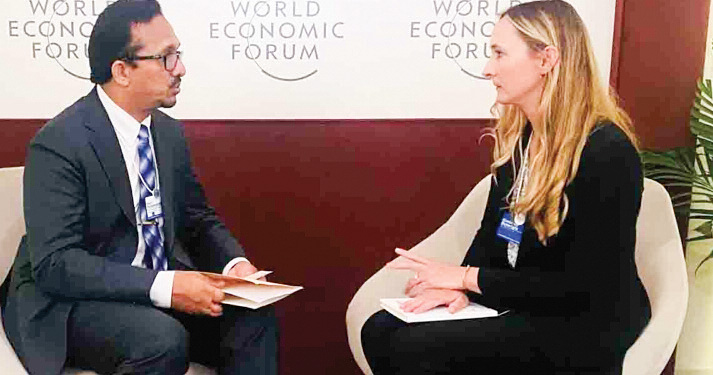
“My tongue in English chains.
I return, after a generation, to you.
I am at the end
of my Dravidic tether
hunger for you unassuaged
I falter, stumble.”
– Indian poet R. Parthasarathy
 When Minister Sunil Handunnetti addressed the World Economic Forum’s ‘Is Asia’s Century at Risk?’ discussion as part of the Annual Meeting of the New Champions 2025 in June 2025, I listened carefully both to him and the questions that were posed to him by the moderator. The subsequent trolling and extremely negative reactions to his use of English were so distasteful that I opted not to comment on it at the time. The noise that followed also meant that a meaningful conversation based on that event on the utility of learning a powerful global language and how our politics on the global stage might be carried out more successfully in that language was lost on our people and pundits, barring a few commentaries.
When Minister Sunil Handunnetti addressed the World Economic Forum’s ‘Is Asia’s Century at Risk?’ discussion as part of the Annual Meeting of the New Champions 2025 in June 2025, I listened carefully both to him and the questions that were posed to him by the moderator. The subsequent trolling and extremely negative reactions to his use of English were so distasteful that I opted not to comment on it at the time. The noise that followed also meant that a meaningful conversation based on that event on the utility of learning a powerful global language and how our politics on the global stage might be carried out more successfully in that language was lost on our people and pundits, barring a few commentaries.
Now Handunnetti has reopened the conversation, this time in Sri Lanka’s parliament in November 2025, on the utility of mastering English particularly for young entrepreneurs. In his intervention, he also makes a plea not to mock his struggle at learning English given that he comes from a background which lacked the privilege to master the language in his youth. His clear intervention makes much sense.
The same ilk that ridiculed him when he spoke at WEF is laughing at him yet again on his pronunciation, incomplete sentences, claiming that he is bringing shame to the country and so on and so forth. As usual, such loud, politically motivated and retrograde critics miss the larger picture. Many of these people are also among those who cannot hold a conversation in any of the globally accepted versions of English. Moreover, their conceit about the so-called ‘correct’ use of English seems to suggest the existence of an ideal English type when it comes to pronunciation and basic articulation. I thought of writing this commentary now in a situation when the minister himself is asking for help ‘in finding a solution’ in his parliamentary speech even though his government is not known to be amenable to critical reflection from anyone who is not a party member.
The remarks at the WEF and in Sri Lanka’s parliament are very different at a fundamental level, although both are worthy of consideration – within the realm of rationality, not in the depths of vulgar emotion and political mudslinging.
The problem with Handunnetti’s remarks at WEF was not his accent or pronunciation. After all, whatever he said could be clearly understood if listened to carefully. In that sense, his use of English fulfilled one of the most fundamental roles of language – that of communication. Its lack of finesse, as a result of the speaker being someone who does not use the language professionally or personally on a regular basis, is only natural and cannot be held against him. This said, there are many issues that his remarks flagged that were mostly drowned out by the noise of his critics.
Given that Handunnetti’s communication was clear, it also showed much that was not meant to be exposed. He simply did not respond to the questions that were posed to him. More bluntly, a Sinhala speaker can describe the intervention as yanne koheda, malle pol , which literally means, when asked ‘Where are you going?’, the answer is ‘There are coconuts in the bag’.
He spoke from a prepared text which his staff must have put together for him. However, it was far off the mark from the questions that were being directly posed to him. The issue here is that his staff appears to have not had any coordination with the forum organisers to ascertain and decide on the nature of questions that would be posed to the Minister for which answers could have been provided based on both global conditions, local situations and government policy. After all, this is a senior minister of an independent country and he has the right to know and control, when possible, what he is dealing with in an international forum.
This manner of working is fairly routine in such international fora. On the one hand, it is extremely unfortunate that his staff did not do the required homework and obviously the minister himself did not follow up, demonstrating negligence, a want for common sense, preparedness and experience among all concerned. On the other hand, the government needs to have a policy on who it sends to such events. For instance, should a minister attend a certain event, or should the government be represented by an official or consultant who can speak not only fluently, but also with authority on the subject matter. That is, such speakers need to be very familiar with the global issues concerned and not mere political rhetoric aimed at local audiences.
Other than Handunnetti, I have seen, heard and also heard of how poorly our politicians, political appointees and even officials perform at international meetings (some of which are closed door) bringing ridicule and disastrous consequences to the country. None of them are, however, held responsible.
Such reflective considerations are simple yet essential and pragmatic policy matters on how the government should work in these conditions. If this had been undertaken, the WEF event might have been better handled with better global press for the government. Nevertheless, this was not only a matter of English. For one thing, Handunnetti and his staff could have requested for the availability of simultaneous translation from Sinhala to English for which pre-knowledge of questions would have been useful. This is all too common too. At the UN General Assembly in September, President Dissanayake spoke in Sinhala and made a decent presentation.
The pertinent question is this; had Handunetti had the option of talking in Sinhala, would the interaction have been any better? That is extremely doubtful, barring the fluency of language use. This is because Handunnetti, like most other politicians past and present, are good at rhetoric but not convincing where substance is concerned, particularly when it comes to global issues. It is for this reason that such leaders need competent staff and consultants, and not mere party loyalists and yes men, which is an unfortunate situation that has engulfed the whole government.
What about the speech in parliament? Again, as in the WEF event, his presentation was crystal clear and, in this instance, contextually sensible. But he did not have to make that speech in English at all when decent simultaneous translation services were available. In so far as content was concerned, he made a sound argument considering local conditions which he knows well. The minister’s argument is about the need to ensure that young entrepreneurs be taught English so that they can deal with the world and bring investments into the country, among other things. This should actually be the norm, not only for young entrepreneurs, but for all who are interested in widening their employment and investment opportunities beyond this country and in accessing knowledge for which Sinhala and Tamil alone do not suffice.
As far as I am concerned, Handunetti’s argument is important because in parliament, it can be construed as a policy prerogative. Significantly, he asked the Minister of Education to make this possible in the educational reforms that the government is contemplating.
He went further, appealing to his detractors not to mock his struggle in learning English, and instead to become part of the solution. However, in my opinion, there is no need for the Minister to carry this chip on his shoulder. Why should the minister concern himself with being mocked for poor use of English? But there is a gap that his plea should have also addressed. What prevented him from mastering English in his youth goes far deeper than the lack of a privileged upbringing.
The fact of the matter is, the facilities that were available in schools and universities to learn English were not taken seriously and were often looked down upon as kaduwa by the political spectrum he represents and nationalist elements for whom the utilitarian value of English was not self-evident. I say this with responsibility because this was a considerable part of the reality in my time as an undergraduate and also throughout the time I taught in Sri Lanka.
Much earlier in my youth, swayed by the rhetoric of Sinhala language nationalism, my own mastery of English was also delayed even though my background is vastly different from the minister. I too was mocked, when two important schools in Kandy – Trinity College and St. Anthony’s College – refused to accept me to Grade 1 as my English was wanting. This was nearly 20 years after independence. I, however, opted to move on from the blatant discrimination, and mastered the language, although I probably had better opportunities and saw the world through a vastly different lens than the minister. If the minister’s commitment was also based on these social and political realities and the role people like him had played in negating our English language training particularly in universities, his plea would have sounded far more genuine.
If both these remarks and the contexts in which they were made say something about the way we can use English in our country, it is this: On one hand, the government needs to make sure it has a pragmatic policy in place when it sends representatives to international events which takes into account both a person’s language skills and his breadth of knowledge of the subject matter. On the other hand, it needs to find a way to ensure that English is taught to everyone successfully from kindergarten to university as a tool for inclusion, knowledge and communication and not a weapon of exclusion as is often the case.
This can only bear fruit if the failures, lapses and strengths of the country’s English language teaching efforts are taken into cognizance. Lamentably, division and discrimination are still the main emotional considerations on which English is being popularly used as the trolls of the minister’s English usage have shown. It is indeed regrettable that their small-mindedness prevents them from realizing that the Brits have long lost their long undisputed ownership over the English language along with the Empire itself. It is no longer in the hands of the colonial masters. So why allow it to be wielded by a privileged few mired in misplaced notions of elitism?
-

 Features5 days ago
Features5 days agoWhy Sri Lanka Still Has No Doppler Radar – and Who Should Be Held Accountable
-

 News1 day ago
News1 day agoPakistan hands over 200 tonnes of humanitarian aid to Lanka
-
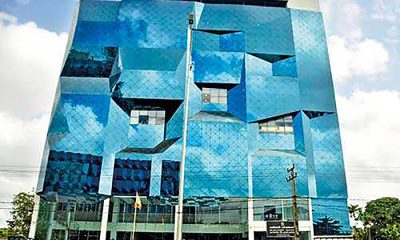
 News7 days ago
News7 days agoRs 1. 3 bn yahapalana building deal under investigation
-

 Midweek Review2 days ago
Midweek Review2 days agoHow massive Akuregoda defence complex was built with proceeds from sale of Galle Face land to Shangri-La
-
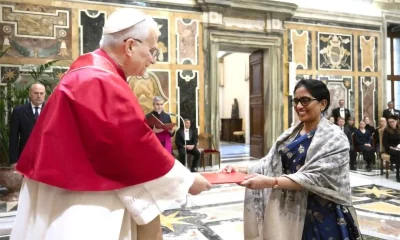
 News1 day ago
News1 day agoPope fires broadside: ‘The Holy See won’t be a silent bystander to the grave disparities, injustices, and fundamental human rights violations’
-

 Latest News5 days ago
Latest News5 days agoLandslide early warnings in force in the Districts of Badulla, Kandy, Kegalle, Kurunegala, Matale, Nuwara Eliya and Ratnapura
-
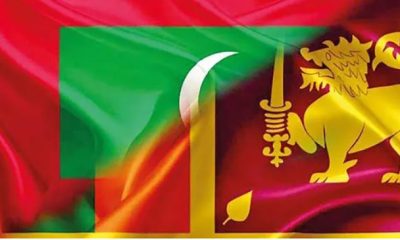
 News6 days ago
News6 days agoGovt. okays postgraduate medical training for Maldivian medical officers and dental surgeons
-

 Editorial5 days ago
Editorial5 days agoDisaster relief and shocking allegations













